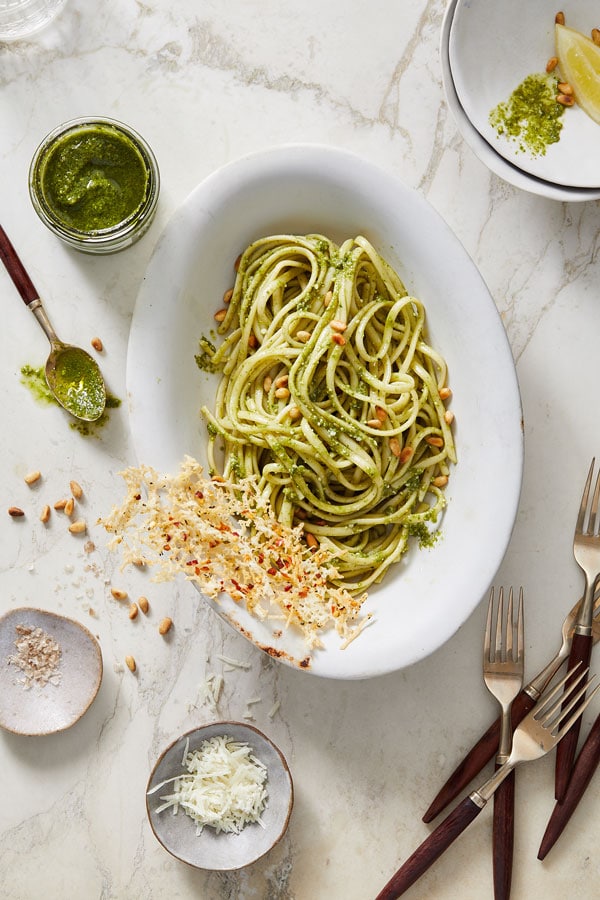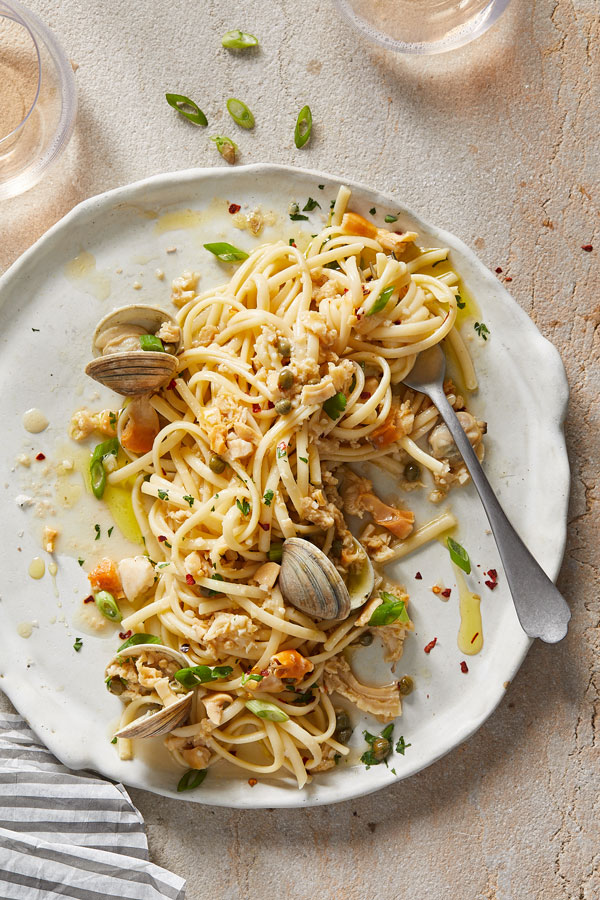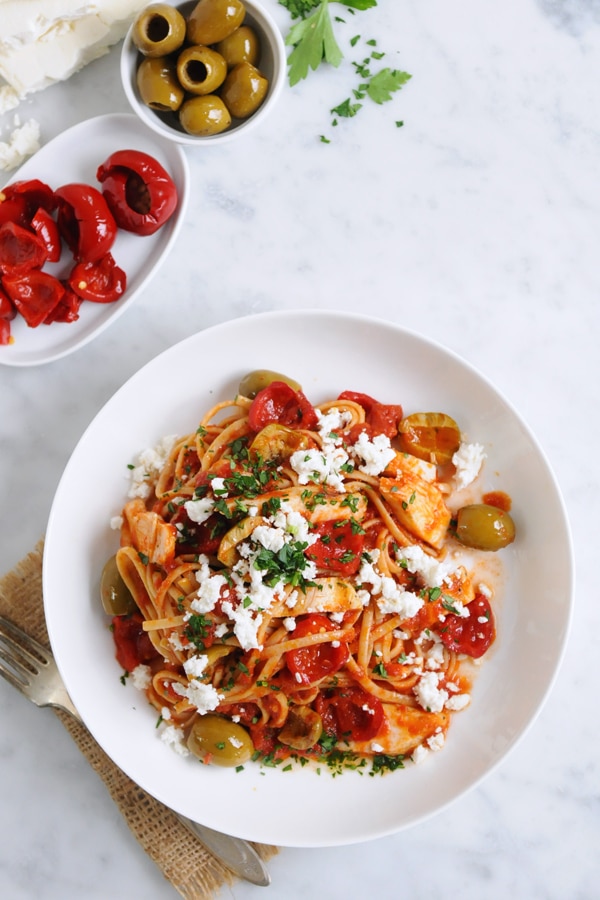Total Price:
Add to CartDescription
Linguine (pronounced lin-GWEE-nee) is a long cut of pasta flattened into an elliptical shape. From the region of Liguria in Northern Italy, Linguine translates to “little tongues” in English. These long strands of pasta are popularly paired with ingredients from the region like fresh basil pesto, seafood and simple tomato sauces.
DeLallo Pasta comes from the town where pasta was born, a region near Naples, at the beginning of the Amalfi Coast. The art of making our pasta begins with the very best quality wheat. We carefully choose wheat with the highest gluten index, gluten content and protein content. All of these characteristics affect how the pasta cooks, as well as its taste and texture. The durum wheat is milled into coarse ground semolina flour and then carefully kneaded with cold, fresh, mineral-rich mountain spring water. We dry our pasta slowly at low temperatures to reproduce the traditional way of making pasta. This method respects the ingredients, preserving the pasta’s color, texture and aroma.
Kitchen and Usage Tips:
Linguine is famous for the prized Italian classic—Linguine alle Vongole, or Linguine with Clams—yet this long cut of pasta shines in a number of applications. Linguine is great paired with simple butter or olive oil sauces, rich tomato sauces, primavera-style vegetable sauces and herbaceous pesto. Our favorite Linguine recipe is a simple creation of sautéed zucchini, shrimp and Parmesan cheese with a kiss of fresh lemon juice.
Frequently Asked Questions:
What Is Linguine? Linguine is a long cut of pasta consisting of flattened elliptical shaped strands made with durum wheat semolina and water. This classic pasta shape originated in Liguria, a region of Northern Italy, and is popularly paired up with other famously tasty ingredients of this area like basil pesto and seafood.
What Does Linguine Mean In English? In English, Linguine means “little tongues,” referring to its long, flattened elliptical shape.
What Is The Difference Between Linguine And Spaghetti? Linguine is wider and flatter than Spaghetti, which is long and cylindrical.
Learn more about pasta shapes.
What Is The Difference Between Linguine And Fettuccine? Fettuccine is a long, flat pasta shape, where Linguine has a distinct elliptical shape like a spaghetti noodle that has been flattened.
What Is The Difference Between Linguine And Bucatini? Bucatini is a long, cylindrical pasta shape with a hole down its center that is more like Spaghetti than the flattened Linguine pasta shape.
What Makes Linguine So Special? Linguine is a long pasta cut that is not completely flat or completely round, but more elliptical in nature. It is sometimes called “flattened spaghetti,” as it looks like a spaghetti noodle that has been flattened to be oval in shape.








Whole-Wheat Linguine (pronounced lin-GWEE-nee) is a long cut of pasta flattened into an elliptical shape. From the region of Liguria in Northern Italy, Linguine translates to “little tongues” in...

DeLallo Manicotti is a large and lovable tube-shaped pasta that is made for stuffing to create cozy baked pasta dishes of the same name. Manicotti pasta is crafted with superior hard durum wheat that...

Hailing from Southern Italy, this fun springy pasta can be described as a twisted “corkscrew” with hole. As sturdy as it is whimsical, Cavatappi is ready to take on hearty sauces and chunky...

Ditalini Rigate, or Ditalini Pasta, are small tube-shaped pasta with ridges. Such tiny pasta is known as pastina. Where once tiny pasta shapes like Ditalini were known as just soup pasta, these small...











